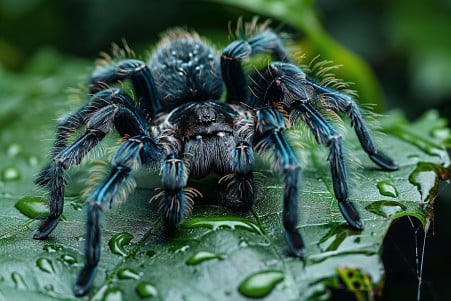
Do Bernese Mountain Dogs Shed? Managing Your Berner’s Coat
20 February 2024
Bernese Mountain Dogs are heavy shedders, so be prepared to deal with a lot of loose fur by grooming them regularly, feeding them a good diet, and knowing what to expect from their genetics.

Can Dogs Eat Sourdough Bread? Understanding Fermented Foods in Canine Diets
20 February 2024
The dangers and rules of giving sourdough to your dog, including the possible pros, cons of raw dough, and nutritional factors.

Do Dachshunds Cause Allergies? The Truth About Dachshund Allergies
20 February 2024
Dachshunds are not hypoallergenic and they do shed, which means they produce allergens like dander that can impact people with allergies, despite what many people believe.

Can Dogs Eat Ranch? Unveiling the Risks of Feeding Fido Condiments
20 February 2024
Potential health issues of giving dogs ranch: garlic and onion toxicity, lactose intolerance, obesity, pancreatitis, and salt toxicity.

Can Dogs Eat Garbanzo Beans? Nutritional Insights and Safe Feeding Tips
20 February 2024
Nutritional information and tips for preparing chickpeas for dogs, such as serving suggestions and possible side effects.

What Do Clownfish Eat? Unveiling Their Ocean Diet and Captivity Feeding
20 February 2024
Clownfish are popular aquarium pets, but there is a lot to learn about these fish. This article covers clownfish behavior, including how and what they eat, their unique relationship with sea anemones, and the threats they face from human behavior.

Can Rabbits Eat Parsley? A Guide to Safe Feeding Practices
20 February 2024
Pros and cons of feeding parsley to rabbits, such as nutritional information, serving size, and possible side effects.

Can Cats Eat Cream Cheese? Understanding Feline Lactose Tolerance
20 February 2024
Potential health hazards and dietary deficiencies associated with giving cats cream cheese, such as lactose intolerance and missing vital nutrients.

Can Dogs Have Period Cramps? A Look at Canine Pain During Estrus
19 February 2024
Understanding the stages of the dog heat cycle and symptoms of pain, how it compares to the human menstrual cycle, and ways to help your dog if they're in pain.

Why Do Cats Have Tails? Unraveling the Feline Tail Mystery
19 February 2024
This article discusses the way a cat's tail works and why it's important for things like balance, communication, and showing emotion. It covers everything from the cat's tail's physical structure to how it has evolved over time.

How Fast Can a Cat Run? Unveiling Feline Speed Capabilities
19 February 2024
House cats can run as fast as 30 miles per hour, and their speed is impacted by a number of things, including anatomy, diet, genetics, and the environment.

Why Do Tarantulas Spin Webs? A Look at Their Silk-Spinning Behaviors
19 February 2024
Tarantulas' use of silk in shelter and threat detection but not in prey capture is consistent with their sensory biology and ability to adapt to different environments.